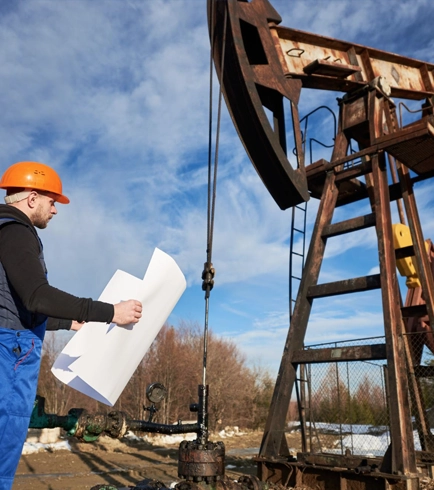Oct . 12, 2024 08:55 Back to list
Exploring Submersible Deep Well Technologies for Enhanced Water Extraction Efficiency
Submersible Deep Well Pumps Advancements and Applications
In the realm of groundwater extraction, submersible deep well pumps play a pivotal role. These innovative devices are designed to operate underwater, efficiently lifting water from depths that other types of pumps cannot reach. With advancements in technology, submersible deep well pumps have become an essential tool for agriculture, municipal water supply, irrigation, and even geothermal energy extraction.
Understanding Submersible Deep Well Pumps
A submersible pump consists of a sealed motor and a pump body, both of which are submerged in the water it is meant to extract. Unlike centrifugal pumps that rely on atmospheric pressure and are located above the water source, submersible pumps are specifically engineered to be submersed, utilizing a hermetically sealed motor to prevent water from entering the essential components. This design allows them to function efficiently under high pressure and at considerable depths, often exceeding hundreds of feet.
Components of Submersible Deep Well Pumps
The main components of a submersible deep well pump include
1. Pump Assembly This is the device responsible for moving water. It generally consists of multiple stages of impellers that increase water pressure and lift it toward the surface. 2. Electric Motor Integrated into the pump assembly, the motor is specially designed to operate underwater. It is connected to the impeller system, driving its rotation and enabling water extraction.
3. Protective Housing Made from durable materials like stainless steel, the housing protects the internal components from corrosion and damage due to friction with water and sediment.
4. Power Cable This supplies electricity to the motor, often designed to withstand underwater conditions for longevity.
5. Discharge Head Located above the water surface, the discharge head is where the water exits the pump and is directed to piping that transfers it to the desired location.
Advantages of Submersible Deep Well Pumps
1. Energy Efficiency Submersible pumps are often more energy-efficient than traditional pumps. They operate underwater where water pressure assists in the pumping process, reducing the amount of energy required to lift water to the surface.
submersible deep well

2. High Capacity These pumps can extract large volumes of water from greater depths compared to other systems. Their multi-stage design not only aids in lifting water but also in delivering it at high pressures.
3. Reduced Installation Costs Since the entire unit is submerged, installation can be less complex, as there is no need for extensive support structures. They can be directly placed in wells, minimizing additional infrastructure requirements.
4. Long Lifespan With proper maintenance, submersible pumps can last for many years. The sealed design protects the motor from water and contaminants, reducing wear and tear.
Applications of Submersible Deep Well Pumps
Submersible deep well pumps find applications in various sectors, including
- Agriculture Farmers use these pumps to access groundwater for irrigation, particularly in regions where surface water is scarce. By providing reliable water supply, they enhance crop yields and sustainability.
- Municipal Water Supply Many cities rely on submersible pumps to draw water from aquifers. This is especially crucial in areas experiencing water shortages, as it allows for efficient water management.
- Geothermal Energy In areas where geothermal resources are available, submersible pumps can extract hot water or steam from underground reservoirs, which can then be used for heating or energy generation.
- Dewatering In construction and mining operations, submersible pumps are often employed to remove groundwater, allowing for safe and dry work environments.
Conclusion
Submersible deep well pumps represent a technological advancement in water extraction methods, combining efficiency, durability, and versatility. With their ability to operate at great depths and deliver substantial volumes of water, they are indispensable tools in agriculture, municipal water supply, and various industrial processes. As water scarcity issues continue to grow worldwide, the role of submersible pumps in sustainable water management is more critical than ever. Advances in engineering and materials science promise to make these pumps even more efficient and reliable, helping us harness our groundwater resources responsibly.
-
Submersible Water Pump: The Efficient 'Power Pioneer' of the Underwater World
NewsJul.01,2025
-
Submersible Pond Pump: The Hidden Guardian of Water Landscape Ecology
NewsJul.01,2025
-
Stainless Well Pump: A Reliable and Durable Pumping Main Force
NewsJul.01,2025
-
Stainless Steel Submersible Pump: An Efficient and Versatile Tool for Underwater Operations
NewsJul.01,2025
-
Deep Well Submersible Pump: An Efficient 'Sucker' of Groundwater Sources
NewsJul.01,2025
-
Deep Water Well Pump: An Efficient 'Sucker' of Groundwater Sources
NewsJul.01,2025
-
 Submersible Water Pump: The Efficient 'Power Pioneer' of the Underwater WorldIn the field of hydraulic equipment, the Submersible Water Pump has become the core equipment for underwater operations and water resource transportation due to its unique design and excellent performance.Detail
Submersible Water Pump: The Efficient 'Power Pioneer' of the Underwater WorldIn the field of hydraulic equipment, the Submersible Water Pump has become the core equipment for underwater operations and water resource transportation due to its unique design and excellent performance.Detail -
 Submersible Pond Pump: The Hidden Guardian of Water Landscape EcologyIn courtyard landscapes, ecological ponds, and even small-scale water conservancy projects, there is a silent yet indispensable equipment - the Submersible Pond Pump.Detail
Submersible Pond Pump: The Hidden Guardian of Water Landscape EcologyIn courtyard landscapes, ecological ponds, and even small-scale water conservancy projects, there is a silent yet indispensable equipment - the Submersible Pond Pump.Detail -
 Stainless Well Pump: A Reliable and Durable Pumping Main ForceIn the field of water resource transportation, Stainless Well Pump has become the core equipment for various pumping scenarios with its excellent performance and reliable quality.Detail
Stainless Well Pump: A Reliable and Durable Pumping Main ForceIn the field of water resource transportation, Stainless Well Pump has become the core equipment for various pumping scenarios with its excellent performance and reliable quality.Detail
